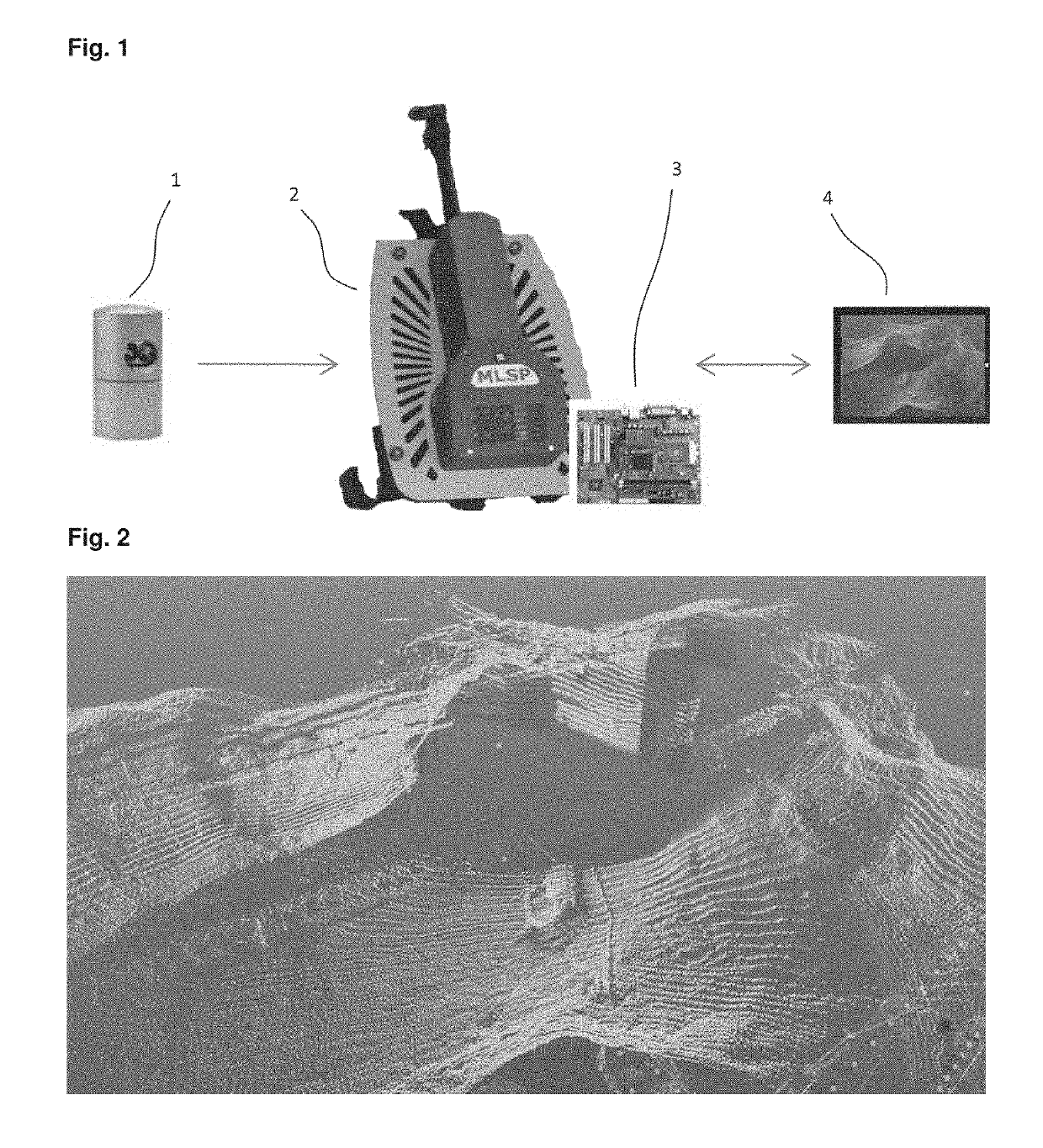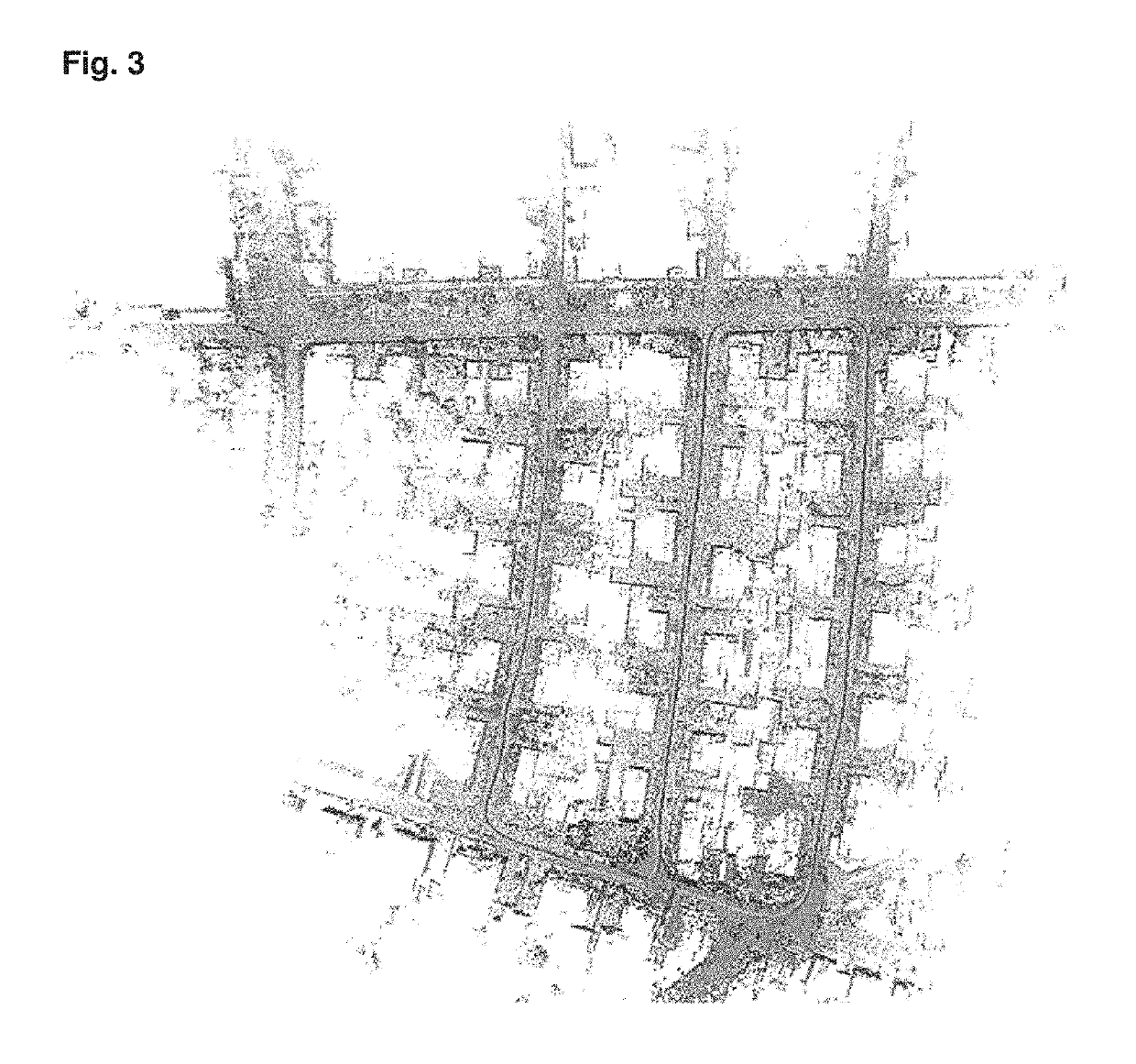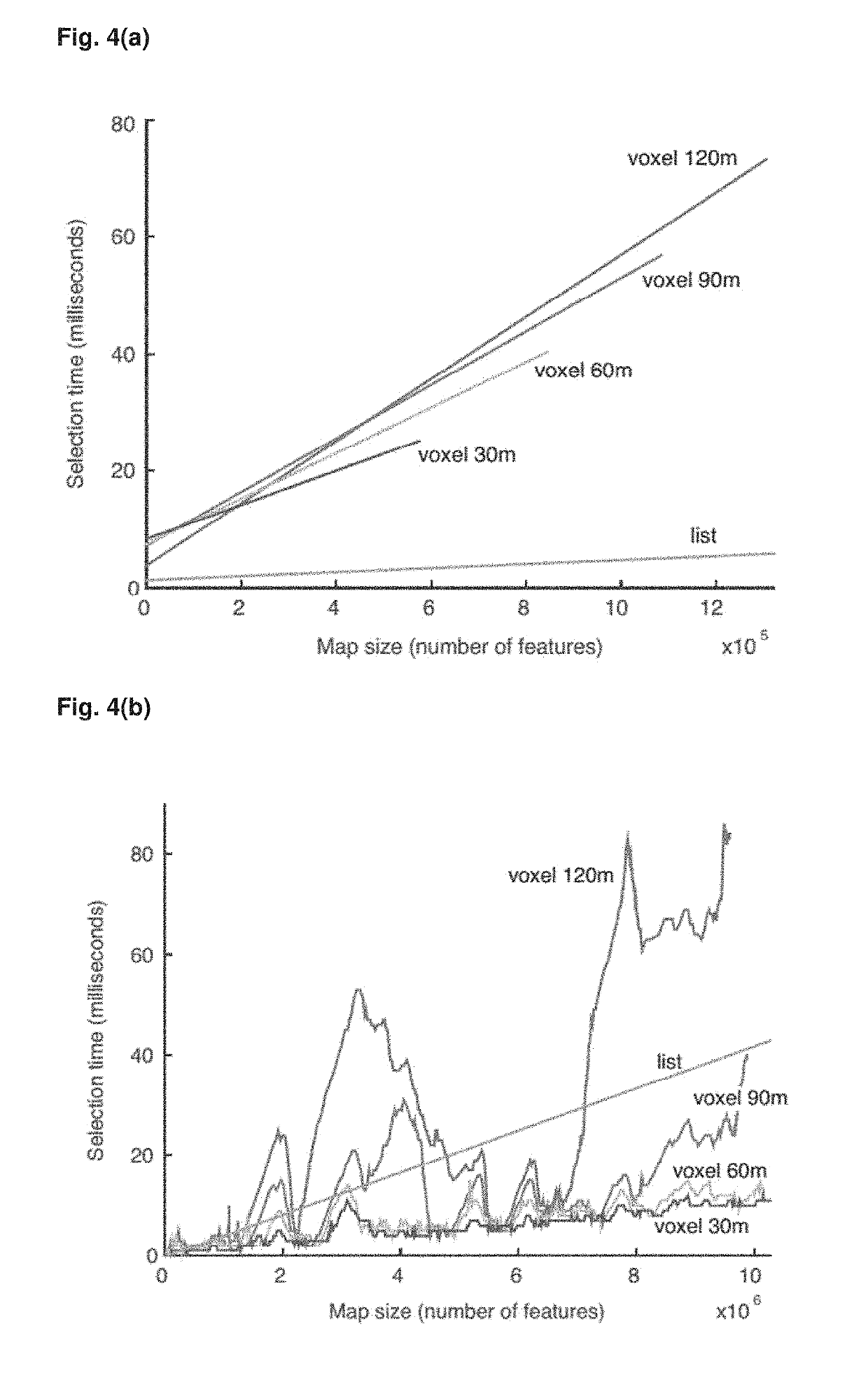Method and device for real-time mapping and localization
a technology of localization and localization, applied in the field of localization and mapping, can solve the problems of low position accuracy and significant drift, inability to generate map information in inertial systems, and not suitable for positioning and navigation purposes,
- Summary
- Abstract
- Description
- Claims
- Application Information
AI Technical Summary
Benefits of technology
Problems solved by technology
Method used
Image
Examples
Embodiment Construction
[0078]As already mentioned previously, one of the main advantages of preferred embodiments of the present invention as herein described lies in the concept of providing real-time change analysis and monitoring in GPS-denied (e.g. indoor) environments. The user is able to inspect a facility and view the changes on a handheld device as he walks through the facility. The preferred underlying methodologies and algorithms are summarized below and further detailed thereafter.
[0079]A basic workflow for a previously unknown (unscanned) location requires in principle two steps: (A) the construction of a 3D reference model at T0 and (B) the localization, tracking and change analysis based on 3D reference model at T1. When revisiting such a location or in cases where an appropriate map already exists, step (B) will be sufficient.
[0080](A) Construction of 3D Reference Map
[0081]The 3D reference map is built using a 3D SLAM (Simultaneous Localization And Mapping) implementation based on a mobile ...
PUM
 Login to View More
Login to View More Abstract
Description
Claims
Application Information
 Login to View More
Login to View More - R&D
- Intellectual Property
- Life Sciences
- Materials
- Tech Scout
- Unparalleled Data Quality
- Higher Quality Content
- 60% Fewer Hallucinations
Browse by: Latest US Patents, China's latest patents, Technical Efficacy Thesaurus, Application Domain, Technology Topic, Popular Technical Reports.
© 2025 PatSnap. All rights reserved.Legal|Privacy policy|Modern Slavery Act Transparency Statement|Sitemap|About US| Contact US: help@patsnap.com



